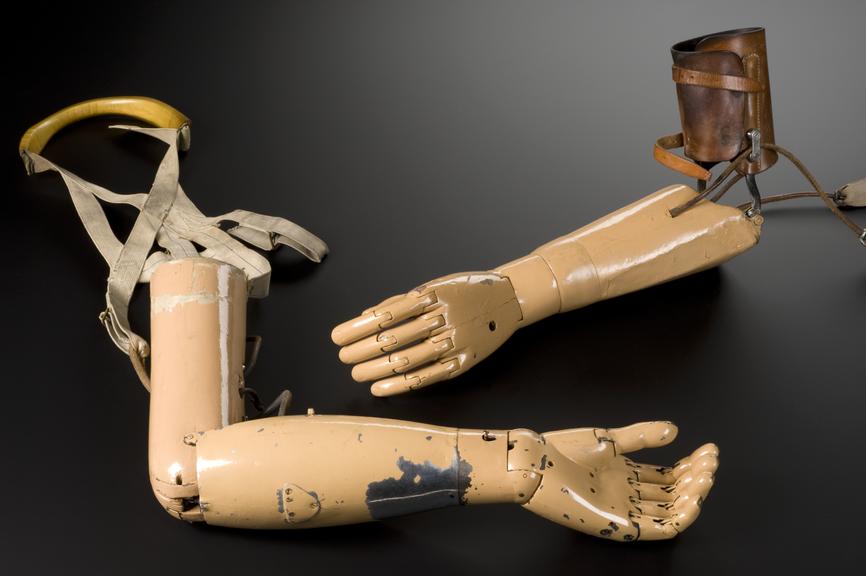

Artifcial left arm, United States, 1915
- Made:
- 1915 in Kansas City














Left above-elbow arm prosthesis with wooden socket and forearm and a metal mechanical hand which allows passive flexion and extension of the wrist. Bending at the elbow can also be accompanied by rotating movements at the wrist. Made c.1915, to a pre-war design, by the Carnes Arm Company from the United States of America, for issue in Britain to a serviceman who had lost a limb during the First World War, 1914-1918.
Initially made in the USA by the Carnes Artificial Limb Company based in Kansa City, to measurements taken in the UK, then shipped back across the wartime Atlantic, during the First World War (1914-1918), these arms were highly coveted by amputees. After a period of dedicated training, it could allow the wearer to achieve a series of quite sophisticated movements that mimicked those of a living limb. An innovative feature being the mechanism which enabled the palm of the metal hand, attached to a wooden forearm and socket, to turn upwards as the elbow was flexed. However, only officers – those most able to top up a set financial limb allowance – could generally afford them. As such, they became known as the ‘Officer’s arm’. Questions over this disparity were eventually raised in the UK parliament.
Before the war's end, the company established manufacturing facilities in the UK, but in practice, wearers found the Carnes arm difficult to master and too heavy to wear for long periods. Many ended up discarded and stored away – never to be worn again,
Details
- Category:
- Orthopaedics
- Object Number:
- 1999-528
- Measurements:
-
overall: 110 mm x 312 mm x 482 mm,
- type:
- artificial arm
- credit:
- Richmond Twickenham and Roehampton Healthcare NHS Trust




